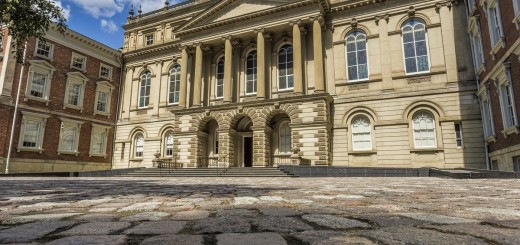Pioneer v Godfrey : SCC to Decide if Damages Should Rain Down on “Umbrella” Purchasers

If you are not familiar with the term “umbrella purchasers,” you may very well be forgiven. In everyday conversation the term might simply be used to refer to someone who lives in an abnormally rainy place, or perhaps an individual that has regrettably lost yet another umbrella. In the legal world, however, umbrella purchasers take on a different meaning, one with important commercial implications towards the extent of liability faced by product manufacturers across Canada.
Umbrella purchasers take centre-stage in the case Godfrey v Sony Corporation, 2017 BCCA 302, which was granted leave and recently saw oral arguments before the Supreme Court of Canada (“SCC”) under the consolidated name Pioneer v Godfrey [Godfrey]. Competition and class action lawyers are both eagerly awaiting the decision, in what is sure to revive a heated legal debate.
So What are Umbrella Purchasers?
Section 45(1) of the Competition Act, RSC 1985, c C-34(“Act”) provides that any person that conspires with a competitor to engage in price-fixing is guilty of a criminal offence. Price-fixing refers to conspirators who try to control the price of their products, rather than engage in genuine competition with one another. In price-fixing schemes, customers end up paying artificially inflated prices that are contrary to free-market principles. Importantly, section 36 of the Act also provides for a civil cause of action (including class actions) for “[a]ny person who has suffered loss or damage” as a result of price-fixing.
This is where umbrella purchasers get involved. Umbrella purchasers are “downstream” customers who have purchased a product from a company that was able to inflate the price of the product unknowingly, due to an unlawful conspiracy between price-fixing conspirators from an “upstream” supplier of that company. The idea is that a price-fixing conspiracy can “move the market”, creating an umbrella of non-competitive pricing for customers.
This is perhaps better illustrated with an example. Assume that three toy manufacturers come together with the intention to artificially fix the price of their toys. They then sell their toys to a department store, which unknowingly applies its own price mark-up before selling the toy to an unwitting end customer. A different innocent department store (who itself receives toys from an innocent manufacturer) raises its prices in response. Perhaps others do as well. In this case, the end customer of these innocent stores would be umbrella purchasers —a downstream party that has been captured under the “umbrella” of this price-fixing conspiracy.
The key issue for the courts is how far to extend the civil cause of action provided by section 36 of the Act. Does the right to pursue damages against price-fixing conspirators extend to all umbrella purchasers as well?
Duelling Approaches in Ontario and British Columbia
The Ontario Superior Court of Justice (“ONSC”) and the British Columbia Court of Appeal (“BCCA”) wrestled with this issue. Both courts initially came to different conclusions. Upon review, the Ontario Court of Appeal (“ONCA”) eventually agreed with the BCCA, unifying consensus among the appeal courts, but setting the stage for a legal skirmish at the SCC.
The ONSC finds no cause of action for Umbrella Purchasers
In the case Shah v LG Chem, Ltd, 2017 ONSC 2586 [Shah, ONSC], the product that was allegedly being price-fixed was lithium-ion batteries, the type you would commonly see installed in laptop computers. The applicants proposed a class action through section 36 of the Act, which would have included the millions of Canadians who had purchased these products downstream as umbrella purchasers.
The ONSC held that umbrella purchasers had no cause of action under the Act. The determinative factor was the court’s observation that “extending liability to the respondents, for harm occasioned to umbrella purchasers, would render that liability indeterminate and uncircumscribed” (Shah, ONSC, para 31, emphasis added).
First, the court noted that adding umbrella purchasers to a class would greatly expand the number of members in the class, even though the responding party would have absolutely no contractual dealings with such members.
Second, the driving assumption behind umbrella purchaser claims is that these downstream customers have suffered due to the actions of an upstream conspirator. In reality, the ONSC found that price-fixing companies have no control over whether the non-defendant downstream companies will choose to match prices, and no control over the volume of products that downstream non-defendant companies will choose to produce and sell. These two points defeated the umbrella purchaser’s cause of action — one that is fundamentally rooted in economic loss.
The ONCA disagrees with ONSC, finding a cause of action for Umbrella Purchasers
In Shah v LG Chem Ltd, 2018 ONCA 819 [Shah, ONCA], the appeal court found that the language of Section 36 of the Act stating that “Any person who has suffered loss or damage” [emphasis added] is a clear indication that Parliament intended a cause of action for umbrella purchasers. Indeed, the ONCA noted: “The language is broad and inclusive. Conspicuously absent from s. 36 is any restriction on who can claim losses” (Shah, ONCA, para 33).
The court also dismissed the lower court’s concerns surrounding indeterminate liability, finding that limitations in tort, such as the requirements of proximity and foreseeability, safeguarded the defendants from indeterminate liability.
The BCCA finds a cause of action for Umbrella Purchasers
The BCCA also found a civil cause of action for umbrella purchasers through the Godfrey case, which concerned price-fixing of optical disk drives. Rather than focus on the “plain and purposeful” language approach undertaken by the ONCA, the BCCA included both a policy analysis as well as (what I read to be) a weighing of considerations, which is a curious approach.
First, the court examined the competing policy objectives underlying umbrella liability and held that the balance favoured permitting umbrella claims. On one hand, umbrella liability would substantially expand the overall scope of defendants’ liability. On the other hand, umbrella liability would help promote the objectives of the Act, which includes promoting competition, as well as deterrence and behaviour modification for offending parties. The court’s reasoning was that recognition of umbrella claims should be allowed on the facts in this case because there was evidence that the conspirators concocted the scheme to harm both the plaintiffs as well as the downstream umbrella purchasers.
I found this analysis perplexing because no part of section 36 prescribes any weighing of interests; it simply provides for a civil cause of action for “[a]ny person who has suffered loss or damage” as a result of price-fixing. It was also curious that the court’s analysis was such a fact-pattern driven determination, yet still relied on a weighing approach. Which approach should we to rely on? And how does it reconcile with the approach taken by the ONCA?
The SCC Asks: How Large Should The Umbrella Be?
Now that Godfrey is before the SCC, competition and class action counsel are hoping for clarity with regards to the treatment of umbrella purchasers. The SCC has now been tasked with an important line-drawing exercise, one that can bring both an appropriate degree of certainty and justice to civil proceedings engaged by the Act.
The complexity of this task is well highlighted by the oral arguments, which spends considerable time simply unpacking economic analysis. In a telling exchange (at 1:20:45 of the oral arguments), counsel for Godfrey concedes that economic experts would need to be hired in almost every umbrella purchaser case in order to effectively analyze cost effects on downstream purchasers. Justice Abella responds by highlighting the risk of indeterminacy. Justice Brown then interjects (at 1:28:40 of the oral arguments) to point out that the expert in the case himself admitted that it was not always possible to determine which class members were economically impacted.
Final Thoughts and Implications
In Canada, price-fixing claims have been litigated against credit card companies, sofas and padded chairs, chocolate manufacturers, the retail gas industry, and most recently supermarket bread in a well publicized case against the Loblaws chain of grocery stores attracting a $1 billion class action. If umbrella purchasers indeed have a right to civil action, expect to see the size of similar class actions increase exponentially.
It is important to remember that the core argument favouring umbrella purchasers is rooted in economic loss. The thinking goes like this: when upstream conspirators collude to fix prices, the resulting costs are passed down through the supply chain to its downstream participants, who all suffer the harm.
My first concern is that in the complicated, elastic world of business, this harm is not always borne out. A non-conspiring supplier may indeed choose to pass cost increases down to customers. Alternatively, a supplier may choose to absorb these costs in order to appease its customers, and avoid raising prices and damaging relationships. Equally reasonably, a supplier may choose to pass on these costs to customers, but also decrease its volume of sales in order to focus on other product lines. Confusingly, a supplier may choose to do any combination of these things, across any number of years. The Godfrey case alone concerns a period of time spanning from 2004 to 2010. Indeed, such fact patterns lend themselves poorly to the analytical protections provided in tort, such as the requirements of proximity and foreseeability.
I think it is important to root our analysis in the plain language of the Act, as ONCA has done. Section 36 provides for a civil cause of action for “[a]ny person who has suffered loss or damage.” This compels us to ask whoare these hypothetical persons? The answer for me is always the direct purchaser, and sometimes the umbrella purchasers. As it stands, it is now the SCC’s unenviable job to draw a line that can filter out non-meritorious claims, apportion damage, eliminate speculation, and ensure stability. We may just have to turn to US case law for an answer.
My final concern is over Godfrey’s potential impact on the Competition Bureau’s highly successful Immunity and Leniency Program. Under the Immunity Program, the first party to disclose to the Bureau an offence not yet detected may receive immunity from criminal prosecution, conditional on their cooperation with the Competition Bureau. Since cartels are so difficult to detect, this whistleblowing program helps the Bureau unearth price-fixing schemes that may otherwise be invisible.
While the Immunity Program shields the whistleblower from criminal prosecution, it does not shield them from civil liability under section 36 of the Act. With the inclusion of umbrella purchasers as part of a class action, such conspirators may indeed view their liability as indeterminate and choose to remain silent.
Overall, Godfrey presents itself as a complex, but consequential decision for the competition and class action bars. I am keen to see what the SCC makes of it.






Join the conversation